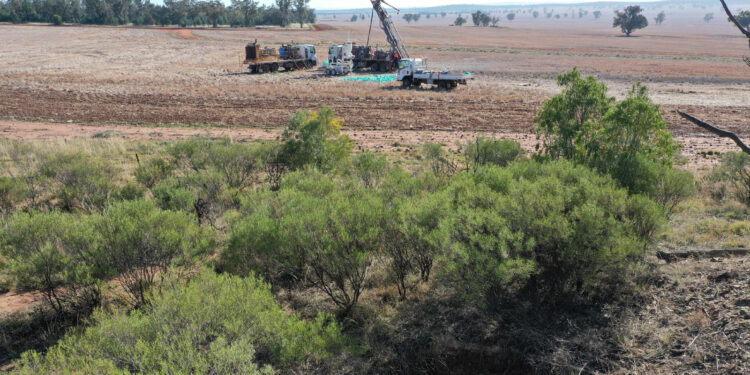Thomson Resources (ASX: TMZ) has intersected further strong mineralised greisens in recent drilling at the Thomson’s 100% owned Bygoo Tin Project, located in the Lachlan Fold Belt in New South Wales.
Results have now been received for two more batches of assays from the 2022 drilling programme, including four holes drilled at the new discovery at “Stewarts”, 300m NW of the Main Zone.
The holes were following up an intersection of 111m at 0.45% Sn from 57m depth in BNRC69.
Drilling at Stewarts was initially aimed at defining the width of the zone as it was thought that the discovery hole, BNRC69, may have drilled down dip. As it turns out this is partly true, but instead of the mineralisation being 10-15m wide it is variable and up to 60m wide.
The observed greisens are variable in strength and mineralogy, varying from quartz-tourmaline to quartz-topaz. Within the overall “greisen” zone there are patches of unmineralised granite between stronger greisen development.
Executive Chairman David Williams said there is one final batch of assays that is still in the laboratories for assay. Results are expected in late July or August.
“Some further great results for the Bygoo Tin Project coming out of the Lachlan Fold Belt drilling program conducted earlier this year. The tin grades are fantastic and interesting to see some copper coming into it as well,” Mr Williams said.
“The expansion of the Stewarts zone we are seeing is great and shows the continuing potential of this tin project.”
The zone itself appears to be thickest and strongest next to the Ardlethan granite boundary. Holes drilled under the shallow workings in the granite outcrop area returned weak intercepts of poorly developed thin greisens. Heading northeast the zone is open, although it is partly constrained by the barren hole BNRC81.
Mr Williams said further drilling is needed to extend the zone to the northeast. BNRC80D was drilled as a diamond hole partly due to weather and logistics. The hole was designed to stay in the greisen (Figure 2) and collect information on the geology and geometry of the mineralisation. It intersected 69.5m at 0.5% Sn from 60m including 2.5m at 2.1% Sn from 70.6m and 7m at 1.7% Sn from 98.4m. One individual 60cm sample at 100.5m depth assayed at 10.1% tin. That sample had 0.84% copper as well and an interval of 4.7m from 100m ran 0.25% Cu (no other significant elements).
For further information please visit: https://www.thomsonresources.com.au/












